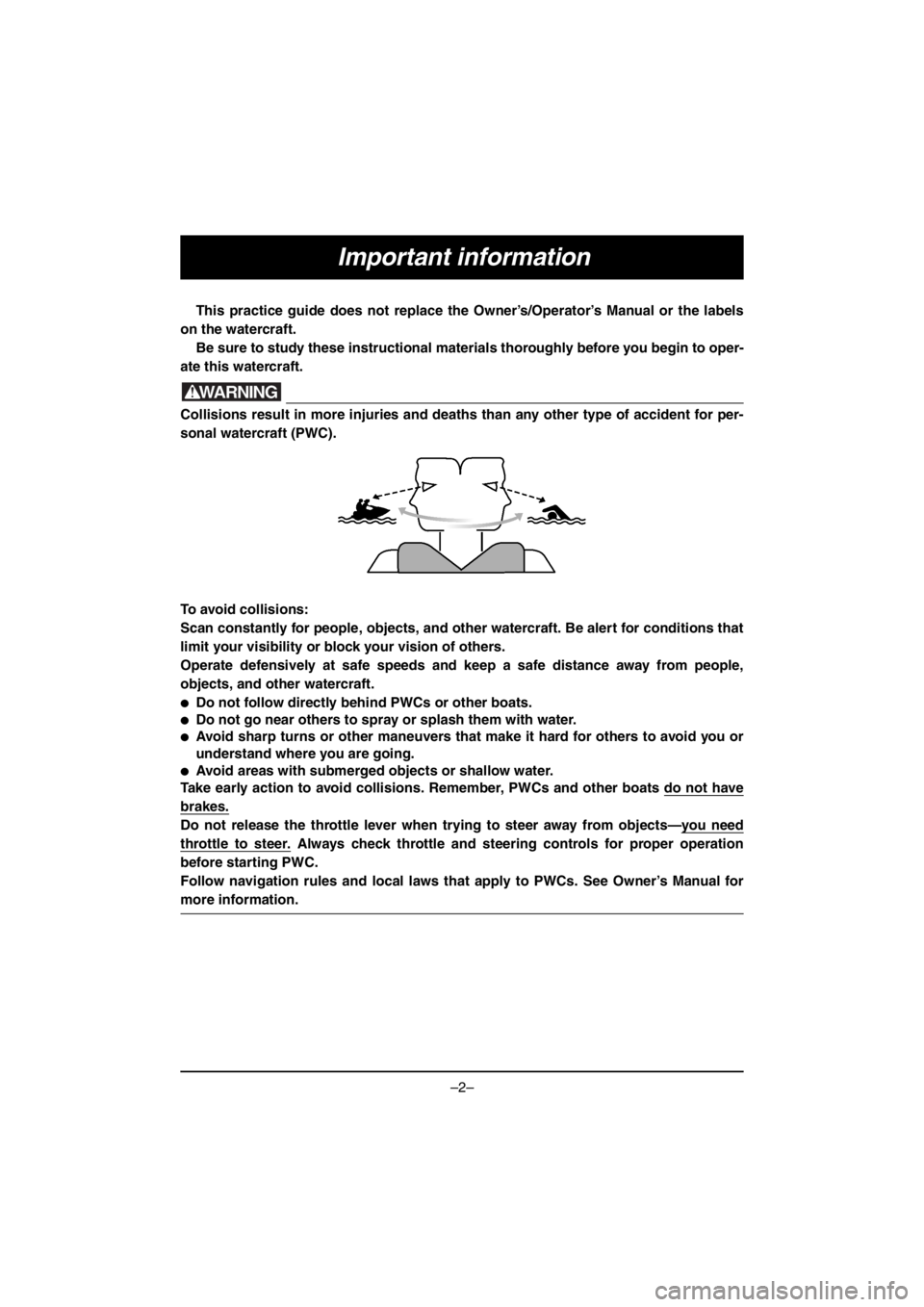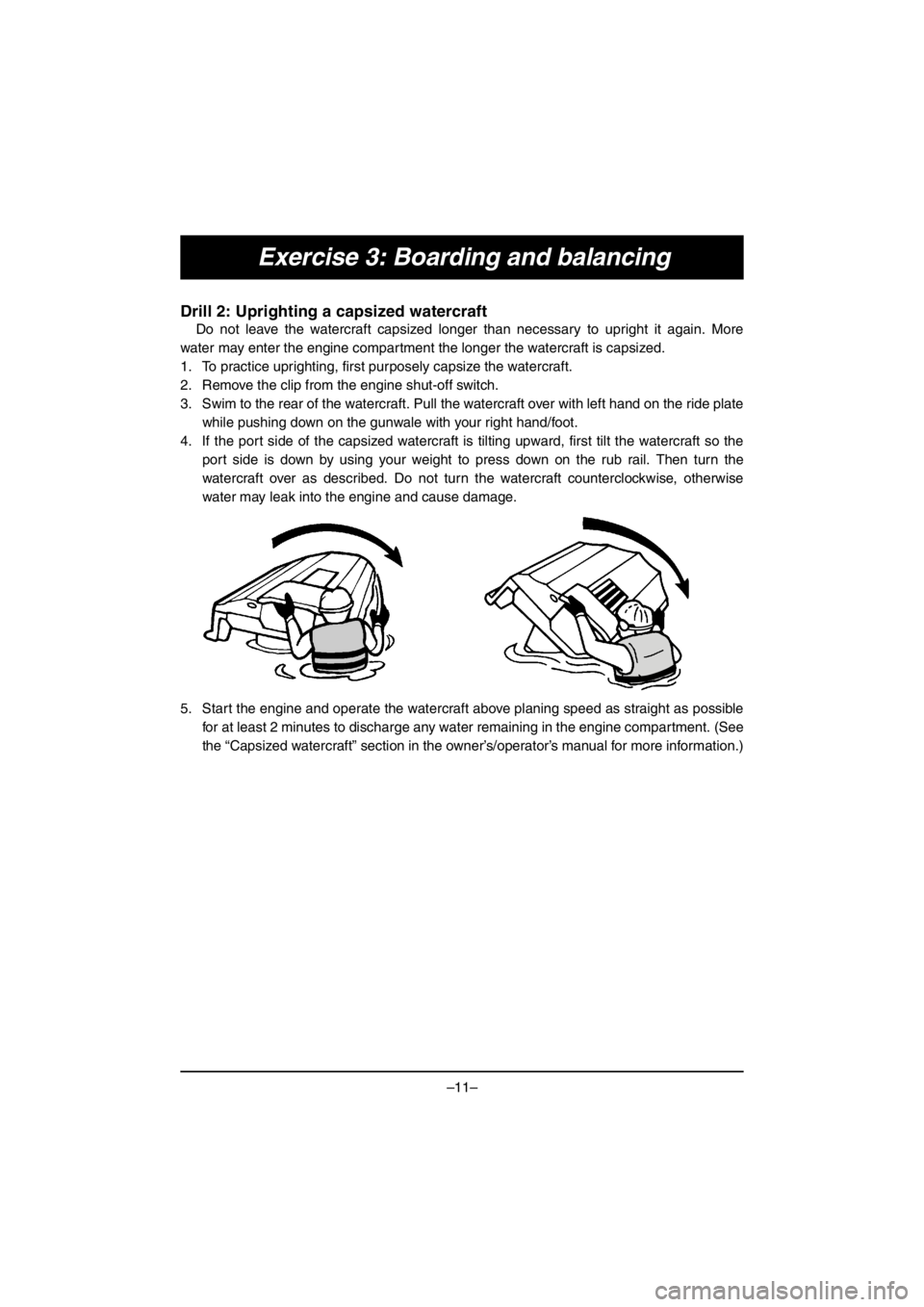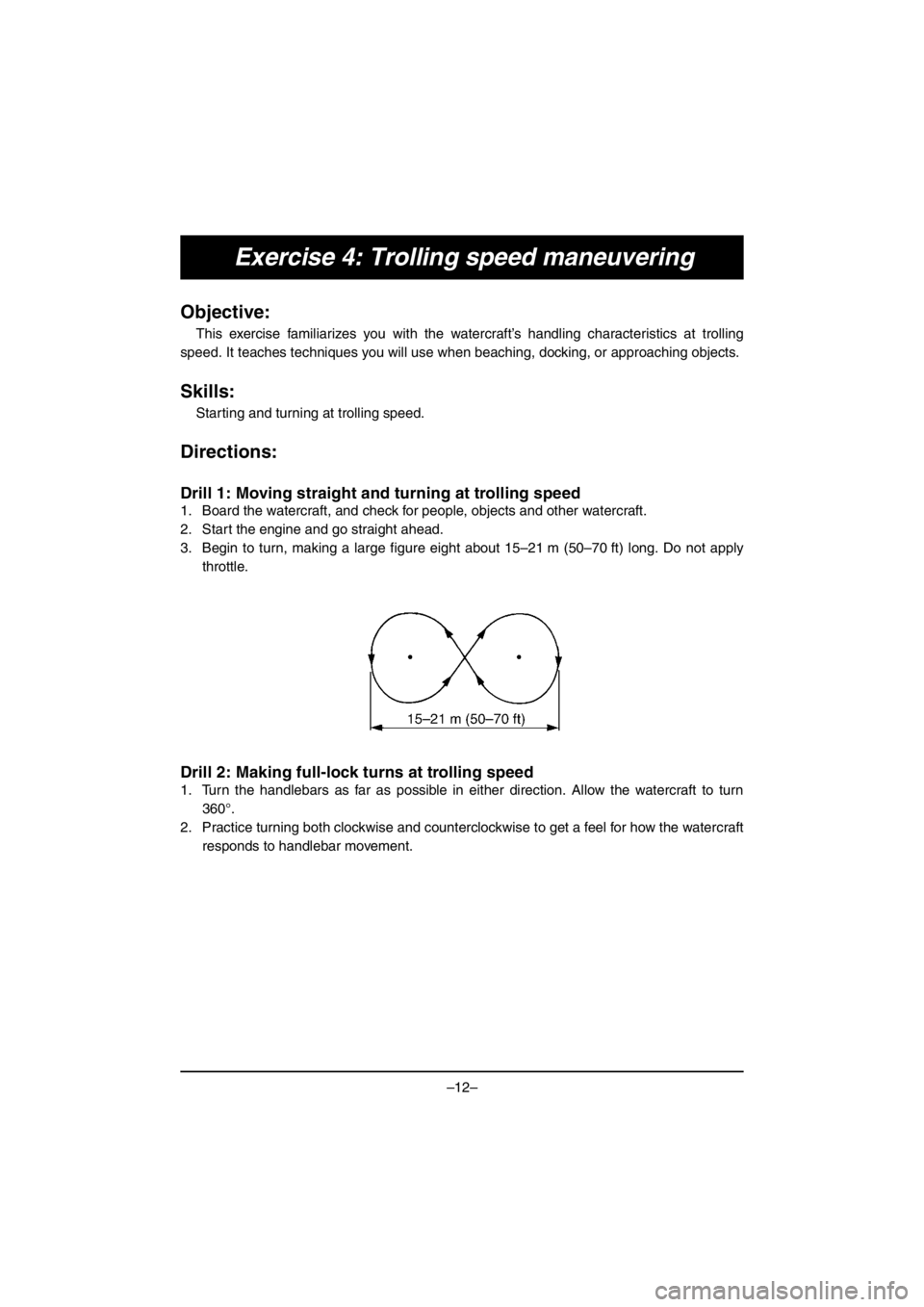lock YAMAHA V1 2016 Manual de utilização (in Portuguese)
[x] Cancel search | Manufacturer: YAMAHA, Model Year: 2016, Model line: V1, Model: YAMAHA V1 2016Pages: 174, PDF Size: 3.15 MB
Page 7 of 174

–2–
Important information
This practice guide does not replace the Owner’s/Operator’s Manual or the labels
on the watercraft.
Be sure to study these instructional materials thoroughly before you begin to oper-
ate this watercraft.
WARNING
Collisions result in more injuries and deaths than any other type of accident for per-
sonal watercraft (PWC).
To avoid collisions:
Scan constantly for people, objects, and other watercraft. Be alert for conditions that
limit your visibility or block your vision of others.
Operate defensively at safe speeds and keep a safe distance away from people,
objects, and other watercraft.
●Do not follow directly behind PWCs or other boats.
●Do not go near others to spray or splash them with water.
●Avoid sharp turns or other maneuvers that make it hard for others to avoid you or
understand where you are going.
●Avoid areas with submerged objects or shallow water.
Take early action to avoid collisions. Remember, PWCs and other boats do not have
brakes.
Do not release the throttle lever when trying to steer away from objects—you need
throttle to steer. Always check throttle and steering controls for proper operation
before starting PWC.
Follow navigation rules and local laws that apply to PWCs. See Owner’s Manual for
more information.
E_F4F-70-forPrint.book Page 2 Wednesday, November 4, 2015 4:58 PM
Page 16 of 174

–11–
Exercise 3: Boarding and balancing
Drill 2: Uprighting a capsized watercraft
Do not leave the watercraft capsized longer than necessary to upright it again. More
water may enter the engine compartment the longer the watercraft is capsized.
1. To practice uprighting, first purposely capsize the watercraft.
2. Remove the clip from the engine shut-off switch.
3. Swim to the rear of the watercraft. Pull the watercraft over with left hand on the ride plate
while pushing down on the gunwale with your right hand/foot.
4. If the port side of the capsized watercraft is tilting upward, first tilt the watercraft so the
port side is down by using your weight to press down on the rub rail. Then turn the
watercraft over as described. Do not turn the watercraft counterclockwise, otherwise
water may leak into the engine and cause damage.
5. Start the engine and operate the watercraft above planing speed as straight as possible
for at least 2 minutes to discharge any water remaining in the engine compartment. (See
the “Capsized watercraft” section in the owner’s/operator’s manual for more information.)
E_F4F-70-forPrint.book Page 11 Wednesday, November 4, 2015 4:58 PM
Page 17 of 174

–12–
Exercise 4: Trolling speed maneuvering
Objective:
This exercise familiarizes you with the watercraft’s handling characteristics at trolling
speed. It teaches techniques you will use when beaching, docking, or approaching objects.
Skills:
Starting and turning at trolling speed.
Directions:
Drill 1: Moving straight and turning at trolling speed
1. Board the watercraft, and check for people, objects and other watercraft.
2. Start the engine and go straight ahead.
3. Begin to turn, making a large figure eight about 15–21 m (50–70 ft) long. Do not apply
throttle.
Drill 2: Making full-lock turns at trolling speed
1. Turn the handlebars as far as possible in either direction. Allow the watercraft to turn
360°.
2. Practice turning both clockwise and counterclockwise to get a feel for how the watercraft
responds to handlebar movement.
E_F4F-70-forPrint.book Page 12 Wednesday, November 4, 2015 4:58 PM